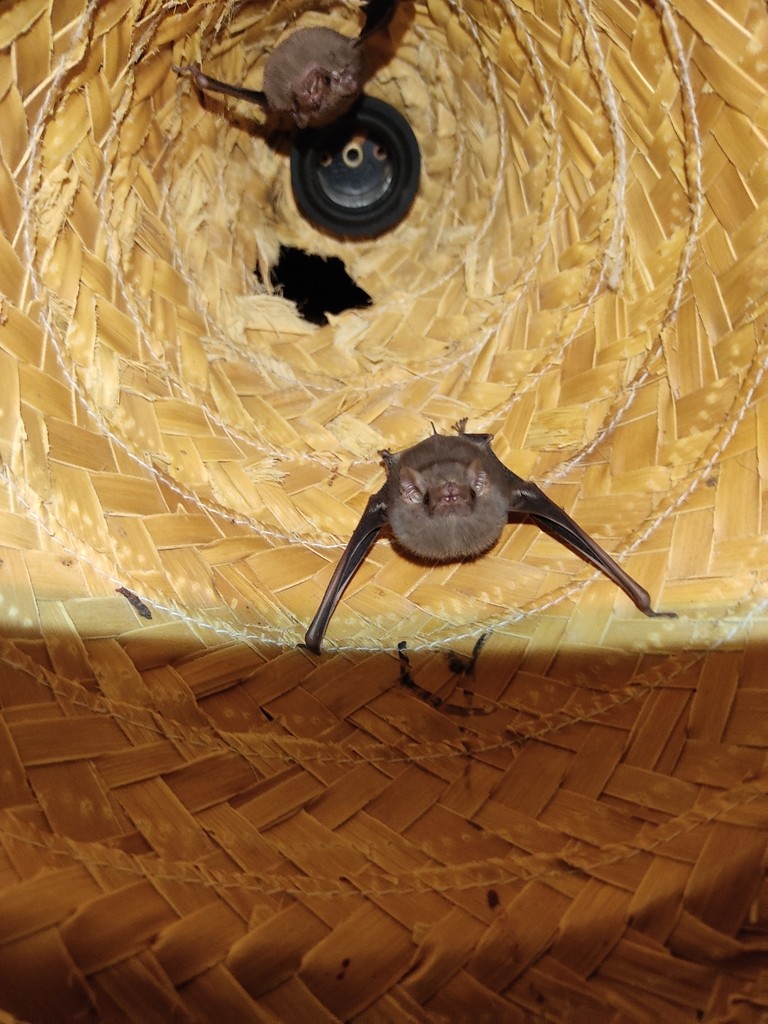Gray sac-winged bat
A species of Sac-winged bats Scientific name : Balantiopteryx plicata Genus : Sac-winged bats
Gray sac-winged bat, A species of Sac-winged bats
Botanical name: Balantiopteryx plicata
Genus: Sac-winged bats
Content
Description General Info
 Photo By rodrigoarrazola , used under CC-BY-NC-4.0 /Cropped and compressed from original
Photo By rodrigoarrazola , used under CC-BY-NC-4.0 /Cropped and compressed from original Description
The gray sac-winged bat (Balantiopteryx plicata) is a species in the family Emballonuridae which comprises the 51 species of sac-winged bats. It is found in Mexico from Baja California Sur and Sonora to Guatemala, El Salvador, Honduras, Nicaragua, Costa Rica and northern Colombia, at elevations up to 1,500 metres (4,900 ft). 
Size
7 cm
Life Expectancy
3-6 years
Nest Placement
Cavity
Feeding Habits
Gray sac-winged bat, despite being a mammal and not a bird, primarily consumes insects. It captures its prey mid-flight, typically during dusk or dawn. This species exhibits specialized hunting techniques and has a preference for specific types of insects.
Habitat
Near the mouth of caves, in barns and other buildings, usually areas that are open and lit, dry areas or arid climates, evergreen forests 
Dite type
Insectivorous
General Info
Feeding Habits
Bird food type
Behavior
According to the IUCN, the Balantiopteryx plicata is rated as "least concern" because the species has a wide range and usually resides in protected areas. Little is known about the specific numbers of Balantiopteryx plicata, so a population trend cannot be deduced. It prefers to live near the mouth of caves, in barns and other buildings; usually in areas that are open and lit. The bat is sociable and is usually part of a group of fifty or more. It has also been reported that the colony can include up to 10,000 bats. In the colony, there are approximately 25% females and 75% males. These statistics are variable – another source described how the males were more likely to be a part of the colony at the beginning of the dry season around mating time than it is to be near the rainy season; most of the females stayed in one roost while the males left for other roosts. It also prefers to live in dry areas or arid climates rather than wet climates, so it would more likely to be found in evergreen forests rather than swamps. It is necessary to have at least 25% humidity, and preferable to have multiple exits in the structure of the roost. When they roost, they stay about twenty centimeters apart - except when young are present - and they all face the same way. The bats do not seem to be territorial, and also share roosts with other species of bat. This bat is insectivorous, feeding on any insects that are around for that season and are considered "opportunistic foragers." This bat population does not seem to wane from season to season as some other bats do, when a certain food is abundant. Foraging takes place in groups or alone. Both roosting and foraging sites change often. The bat forages over open spaces that are usually "several kilometers" away from the living space. Because of their large colonies, they must have a wider range when hunting for food. While the mothers are away hunting, the young bats stay behind and cling to the wall of the cave or structure in which the colony lives. The bats start hunting a little before sunset, and they fly relatively slowly. It was measured that the males fly at approximately 9.76 km/h and the females fly at about 9.14 km/h. 
Scientific Classification
Phylum
Chordates Class
Mammals Order
Bats Family
Sac-winged bats Genus
Sac-winged bats Species
Gray sac-winged bat